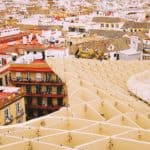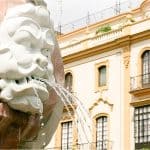Spain in winter offers experiences that most travellers miss. Shrug off the tiring heat of summer and uncover what the Spaniards already know about making the most of the cooler months.
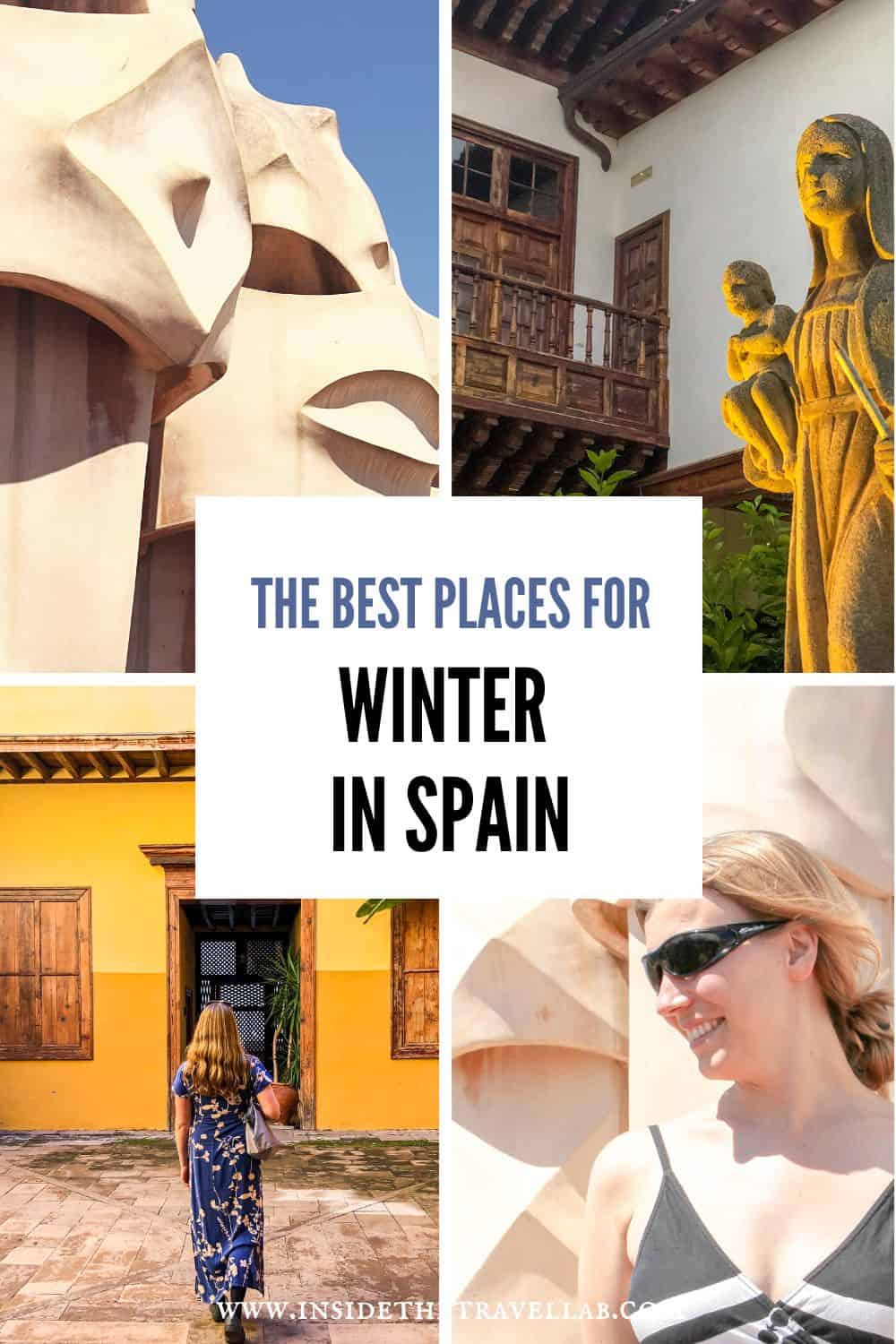
Why Visit Spain in Winter
While northern Europe dresses in snow and frost between December and January, Spain offers a warmer geothermal palette. Seville has nine and a half hours of daylight on the shortest day of the year when Oslo is struggling to survive with only six, and London goes dark after eight.
Even when the calm waters of the Mediterranean are no longer warm enough for swimming, evenings remain mild, perfect for evening strolls.
And the best part is that nothing is crowded. No lines at the museums, free tables at most restaurants, and empty beaches ripe for photography.
And, of course, if you do like the cold, white stuff, Spain has ski slopes as well.
Get ready to enjoy our guide to Spain in winter.
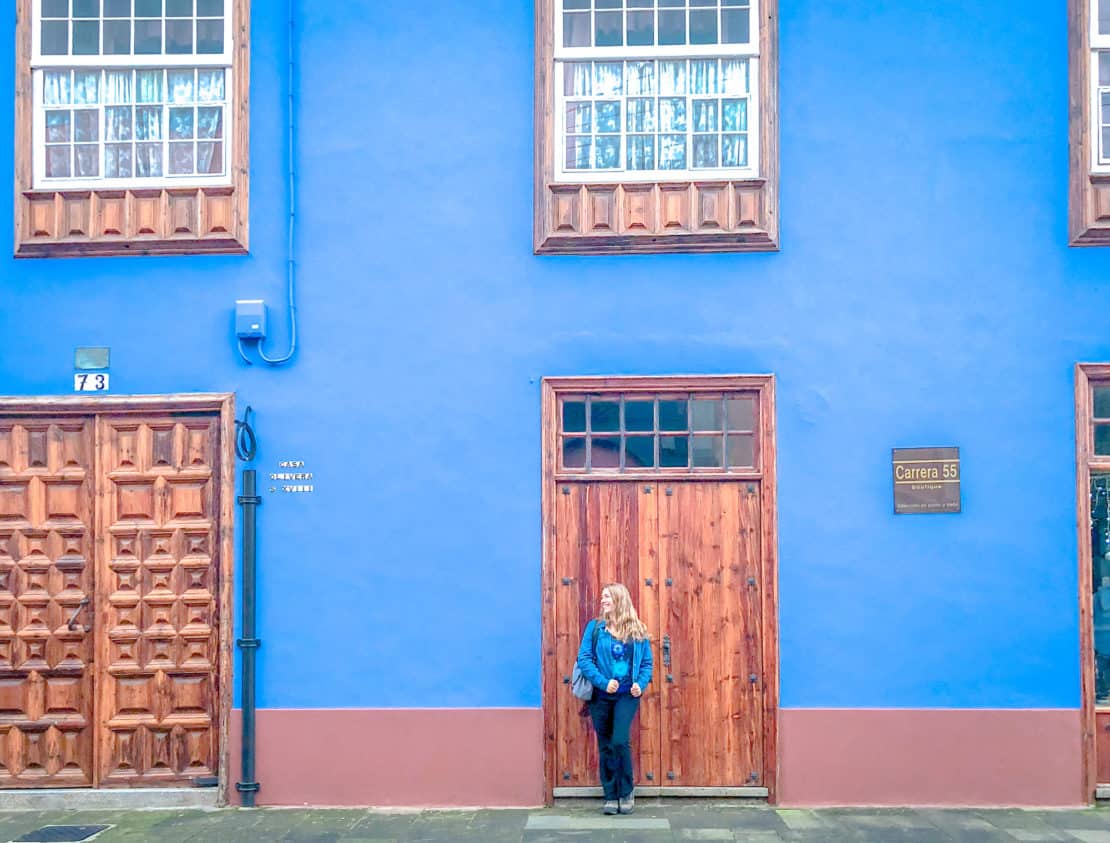
What is the Weather Like in Spain in Winter?
Spain is one of the warmest European countries, but the average temperatures varies greatly depending on the region you are visiting.
The Canary Islands, for example, are not that different in winter compared to the summer months. With temperatures of around 25C, you can still go snorkelling, scuba diving, sailing, or sunbathing just as you would in July.
Barcelona, on the other hand, gets bitingly cold in winter. It’s still a beautiful place to visit, but wrap up warm and get ready to admire the twinkling city lights more than lounging around on the beach.
Northwest, in the Basque Country, you will find a rainier Spain with fewer sunny days but still decently warm for the winter months. Asturias gets veiled in mist with temperatures of around 15C. Now is probably the best time to try their hot and heavy dishes based on morcillas and white beans.
The weather in Madrid is a bit chillier, especially in January, which is the coldest month in Spain. The temperature stays around 11C, so bring a jacket and a sweater if you’ll make a stop in the capital.
Being a Digital Nomad in Spain
Let’s face it, Spain makes a great base for digital nomads. It’s easily connected to the rest of the world, has decent wifi and plenty of great things to do. When you’re making your plans to hit the road and keep working remotely, consider using a VPN, an essential tool for digital nomads to help make life easier.
Don’t have that much time? Then check out this guide to how to spend the perfect week in Spain instead.
What to Do in Spain in Winter
Spain is a Catholic country rich in tradition, so December is a busy month. The cities dress up in Christmas lights, and Christmas markets open in almost every town. People go hunting for gifts, and everybody is talking about parties and dinners.
The biggest event takes place on the night of the 5th of January, as the Reyes Magos or Three Kings parade through town and revellers throw sweets to children.
Here are some of my favourite things to do in Spain during the winter.
Christmas Markets
Spain’s Christmas markets don’t really resemble the snow-lipped chalets of Austria and Germany. But they’re still fascinating places to visit.
Look out for sweets shaped like black coal, ready to go in the stockings of children who have been naughty.
Next, raise your eyebrows at the cagana. Many families in Spain have intricate nativity sets, with pieces added each year until the whole ensemble becomes a family heirloom. While you’ll see many of the traditional figures at the Christmas markets – Mary, Joseph, some donkeys – you’ll spot something else as well.
The cagana or, not to put it too delicately, the crapper. It is, indeed, a figure with his or her pants down, mid poo, with a coil on the floor to prove it.
What, you may ask, is this doing in a Christmas nativity? It’s kind of hard to say. And after years spent living in Spain, I’m still none the wiser.
Still, it does provide a new kind of tradition for winter in Spain: spotting the most creative cagana amid the markets. Wooden, plastic, hand carved or mass produced, you can find a cagana as a smurf, a cartoon or even Queen Elizabeth of Great Britian and Northern Ireland.
Christmas in Spain
Christmas itself tends to be more of a religious day in Spain than in the UK. People head to cathedrals and churches on Christmas Eve for the Midnight Mass, also known as ‘The Mass of the Rooster’. People wear their best clothes, and you can hear the choirs from outside, sometimes boosted by giant speakers. It is a beautiful night to stroll around the cities and soak in all the light of the holidays.
An old Spanish saying is ‘Esta noche es Noche-Buena, Y no Es noche de dormir’. It means that on Christmas Eve, there’s no room for sleeping.
New Year’s Eve in Spain
On New Year’s Eve, people take over the streets to celebrate the arrival of the new year. The atmosphere is fantastic, especially in Madrid, which hosts a great outdoor party in its central square every year.
Expect to see people dressed up with masks and wigs, confetti everywhere, music, honks, lots of laughter and jokes. This goes on for hours before the big clock on the square gets ready to strike 12.
At this point, it’s time for another tradition. You need to eat 12 small grapes within the 12 seconds as the clock strikes midnight. Each grape symbolises a month of the year to come, and the tradition says you should eat them if you want your year to be cheerful.
Three Kings Day in Spain
On the 6th of January, the Spanish celebrate the day when the three kings arrived at that famous stable in Bethlehem. It is a big deal, and on the night before, you will see parades representing the three wise men, Gaspar, Melchior, and Balthazar, as they ride on fake camels through the town centre.
Floats follow with sweets thrown into the crowds – and sometimes, the camels are real.
Children leave empty shoes overnight and on the morning of the 6th, they wake to find them filled with presents.
It’s a bank holiday, so bear this in mind when planning your Spanish itinerary.
Skiing in the Pyrenees
Spain isn’t the first place many people think of for skiing, but you have more choice than you think. In Andalusia, you can enjoy mild weather in Seville and then head up the Sierra Nevada to ski. The Cantabrian mountains also have some resorts.
But it’s the Pyrenees which offer up the most white powder, and they’re easily reached from Barcelona (check out our guide to spending three days in Barcelona here). It’s a great range for beginners and winter sports enthusiasts alike with plenty of introductory slopes and good prices for ski lessons. However, remember that during the winter season, weekends can get crowded, so make sure to book your spot in a resort in advance.
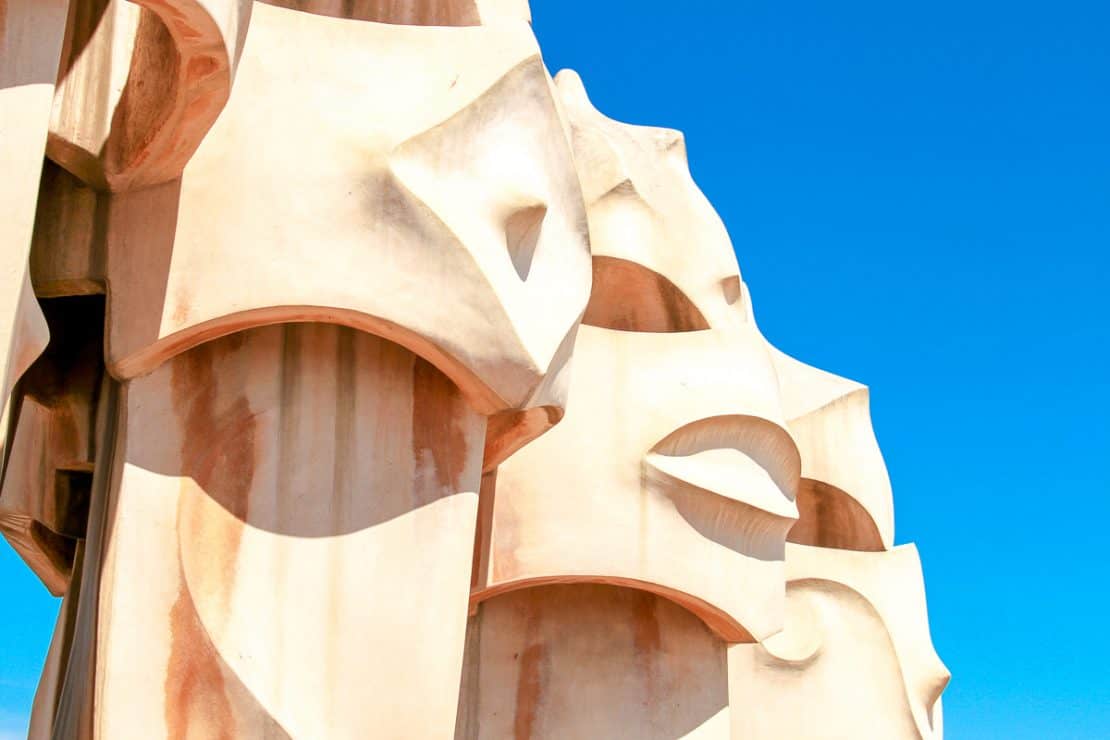
Museum Hopping without the Rush and the Crowds
If you have ever visited Barcelona or Madrid in the summer, you’ll know that everything is crowded, from museums to Gaudi’s buildings, to cathedrals, to the rest of it.
When winter comes, the crowds are gone, and the museums become more peaceful. In most cases, you’re inside within minutes, instead of queuing for an hour or two, which can sometimes happen in the summer.
Winter is the time to see Picasso’s Guernica at the Reina Sofia without feeling that you need to move along because you are blocking the view. Spend as much as you like in front of Francisco de Goya’s ‘Third of May’ at Prado or admire the details in Hieronymus Bosch’s ‘Garden of Earthly Delights’ at the same museum.
In the winter, time flows more slowly under the cooler skies of Madrid.
And in Barcelona, see La Sagrada Familia at your own pace to truly understand Gaudi’s vision.
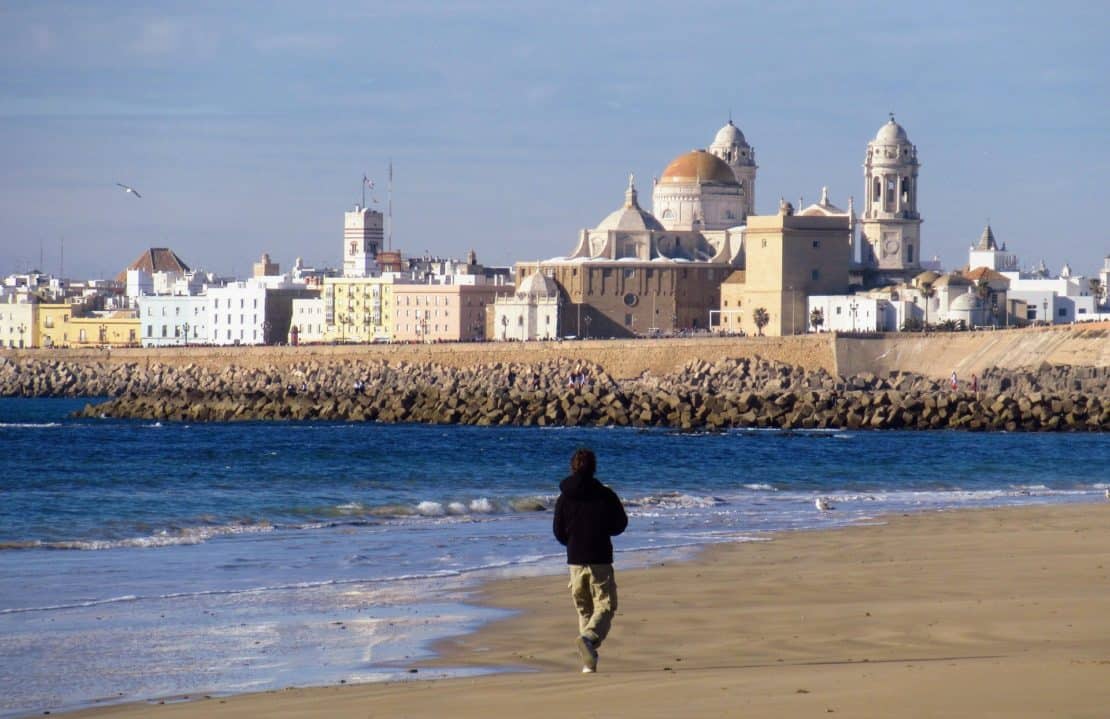
Beautiful Beach Strolls
It may not be the best time for swimming in the Cantabrian Sea in Asturias, but you can still spend time on the sandy beaches of Spain, where you will usually experience warm weather and sunny afternoons. Discover the beauty of the Barceloneta, when there’s still room for you to walk on the shore, or take a cruise to Mallorca if you are looking for a taste of island life.
I’ve taken the best Spanish beach photos in the winter because there was almost nobody there. Just me and the wide sea, with woolly clouds and the promise of a new year coming.

Savour the Food
Spain’s food is always a highlight. If you only visit in summer, you may be confused about some of the traditional dishes. Visit Spain in winter and it all becomes clear.
It’s the perfect time to try a real Spanish hot chocolate. It’s thick like a pudding, and you eat it with a spoon. The mark of a good one is if the spoon can still stand up in the chocolate. Served with piping hot, fresh churros and it’s a dish made in heaven.
Then there’s Caldo: a pork or chicken broth served in a cup, and eaten with a spoon. It’s perfect for colder days in Madrid.
Galicia serves up caldo Gallego to warm the cockles. Made with white beans, potatoes, cabbage and Galician chorizo, it’s said to ward off winter colds. Another great alternative is the Fabada Asturiana, but only if you can handle eating blood sausages.
Finally, make sure to try the the fabada. Asturians cook the meat for hours in a sauce of wine, tomatoes, cloves, and garlic. By the time it is finished, the meat simply melts.
Best Places to Visit in Spain in Winter
Spending the winter holidays in Spain can be extremely rewarding. Beyond the advantage of seeing fewer tourists and more locals, you get to experience a side of Spain you could never see in the summer. It’s also a great time for a great Spanish road trip.
But here are some of the best places in Spain in winter.
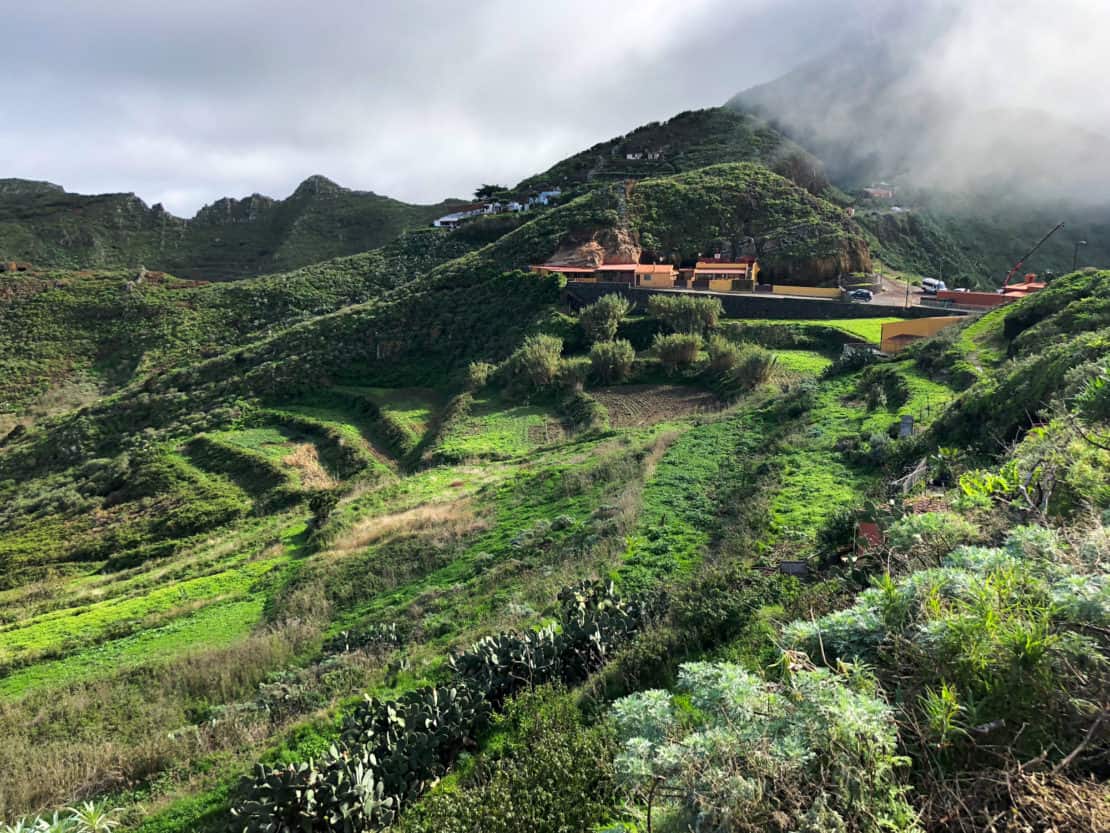
The Canary Islands
Relish the sunshine on the beaches in Gran Canaria or La Palma or try some of these unusual things to do in Tenerife.
The Spanish sky is phenomenal during nights with no clouds, and the stars are so strong, you’ll feel a bit dizzy just by looking at them. So book a star safari and go out at night with a team of astronomers to make the most of it.
Also, check out the crocodile park in Grand Canaria to see these majestic animals in a protected area. Most of them have pretty sad stories of abuse and neglect before being rescued, but you can help by buying a ticket to see them.
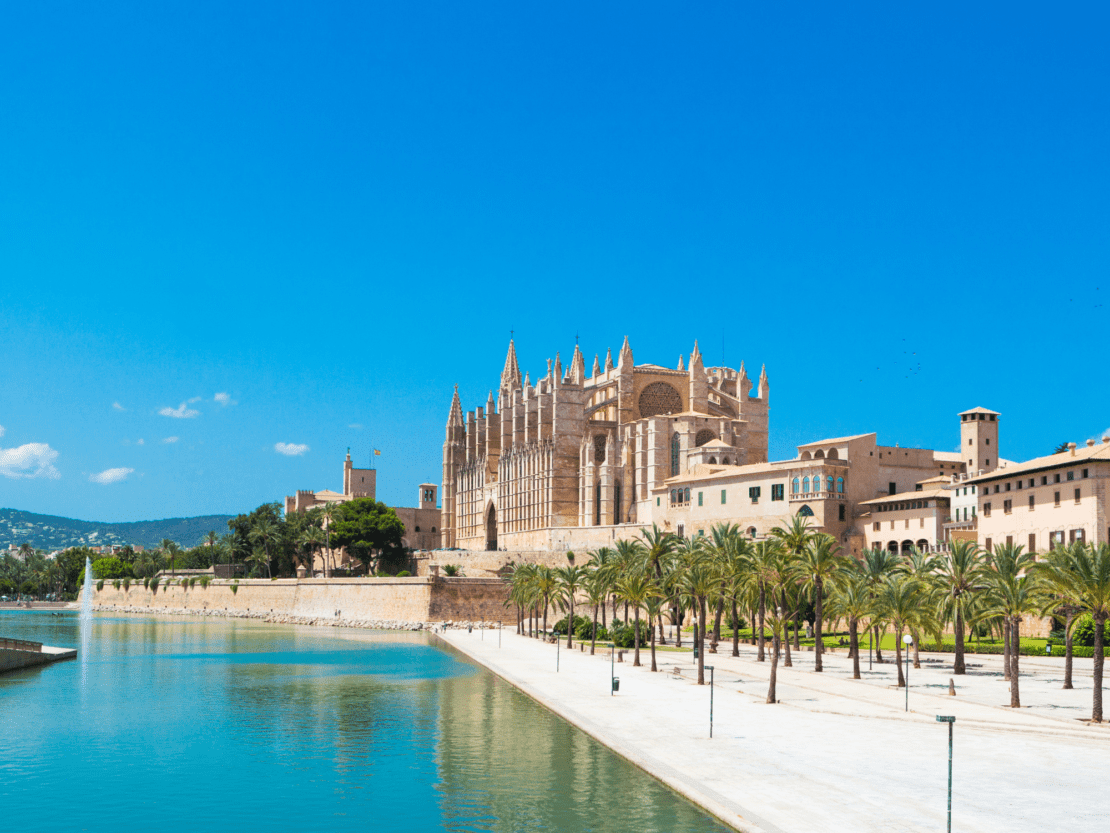
The Balearic Islands
One of the most popular attractions in the Balearics is Palma, a magnificent city which combines vestiges from the Romans and Moors with contemporary Spanish influences. Here’s how to spend one day in Palma.
The Cathedral of Palma is stunning in every season, but a special event takes place only twice a year, and one of those times is 2nd February. Step into the cathedral on this day in the morning to see the light filtered by the stained-glass windows and creating the most dazzling effect.
The Balearics are also perfect for cruising, so you can hire a catamaran and go from one island to another, exploring the cute coves and beaches and picturesque bays.
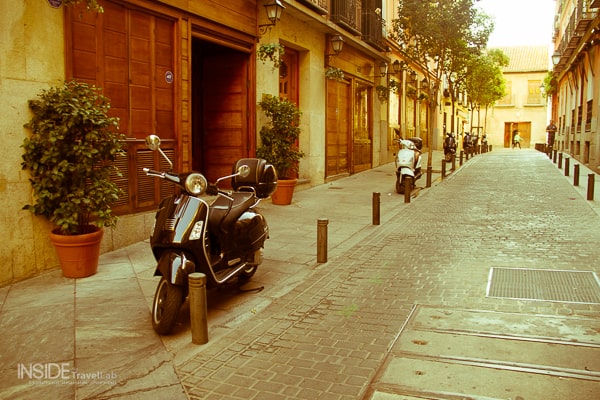
Madrid
The Spanish capital is a great place for a cultural tour. So, if you are here, focus on the many museums, cathedrals, and monuments you can now explore without needing to hurry. Immerse yourself in centuries of art at the Prado Museum or fall in love with the Baroque grandeur of the Royal Palace of Madrid. The Museum of Reina Sofia is also worth a visit.
Stretch your legs in the Parque del Retiro, beautifully decorated this time of the year, and don’t forget to hit the Christmas market at Plaza Mayor. Think you know everything there is to know about the Spanish capital? These 31 facts about Madrid might have you thinking twice…
Inside tip: wander around Madrid’s literary quarter and then make sure you have time to visit the oldest chocolateria in the country.
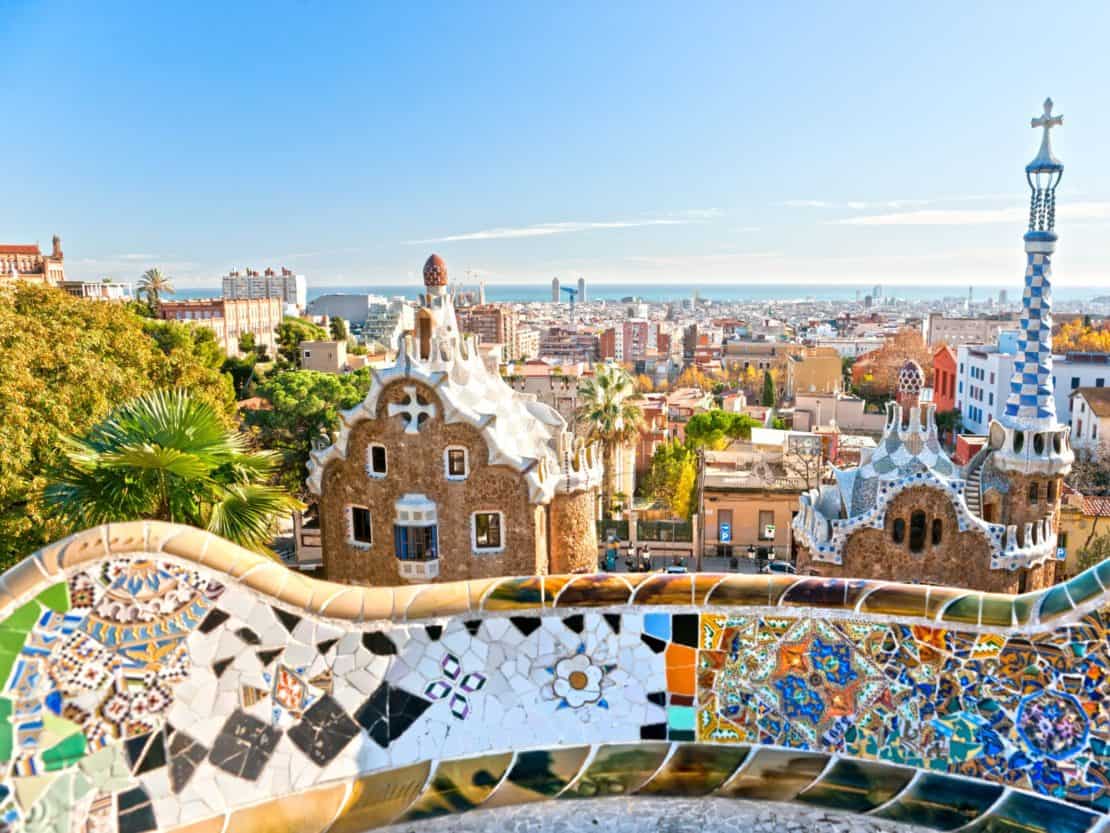
Barcelona
Barcelona is one of Spain’s most popular destinations, even in the winter. But at this time of year, the streets of the Old Jewish Quarter are less crowded, and La Sagrada Familia itself becomes more accessible to tourists who are in a hurry.
Take a full day to discover Gaudi’s buildings, from La Pedrera to Park Guell, while trying to figure out his unique vision. It is easier to connect to art and architecture masterpieces when there are only three other people in the room.
Take a tapas tour around the tapas bars in the city centre or, if the weather proves a bit chilly, learn how to make paella from a local chef. The restaurants are also great in Barcelona all year round, so eat your way through the city’s long culinary tradition.
Travelling alone? Check out our guide to exploring Barcelona solo.
And don’t forget that Barcelona is a great starting point for day trips. Go to Montserrat Monastery, only 50 kilometres from the city or visit the smaller city of Girona for more history and good food.

Cordoba
Cordoba is an amazing city, combining Roman and Moorish architecture into some of the most beautiful buildings in all of Spain. Its historic centre alone is a delight to visit in the winter, but take enough time to discover the splendour of the Mezquita Cathedral de Cordoba, a striking combination between a mosque and a church. It is so quiet in January. And so magnificent!
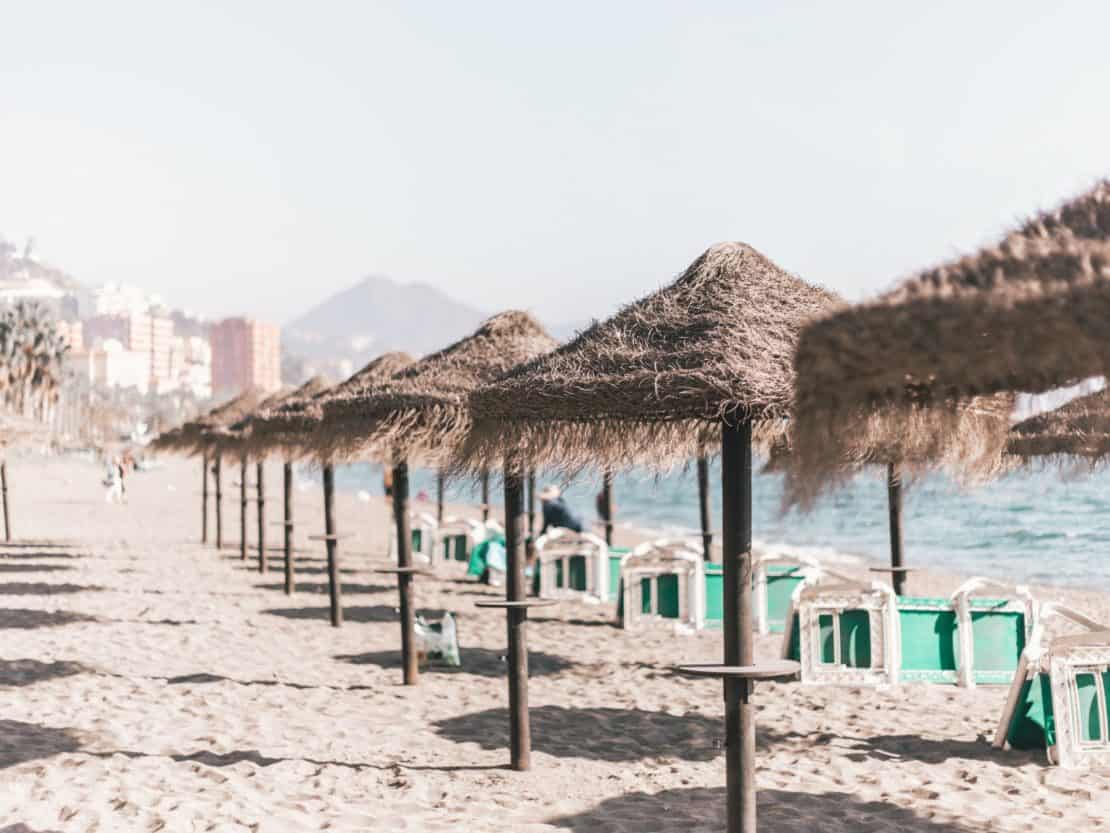
Malaga
Situated on the Mediterranean Coast and enjoying the waves of warmth specific to the south of Spain, Malaga doesn’t close its doors in winter. Beyond the natural and cultural beauty of the city, plenty is happening here, especially at night. Clubs boom with music and restaurants stay open until late. Here are our top tips for visiting Malaga.
Santiago de Compostela
If you are walking El Camino de Santiago or the Way of St James, you will end your trip in Santiago de Compostela. Here, inside the Cathedral de Santiago de Compostela, you will find the tomb of St James, which is usually a moving experience for both believers and non-believers alike.
The city is one of the biggest centres of Catholicism in Europe, so around the holidays, it fills with colour and light. It also has a nice Christmas market where you can shop for gifts and trinkets.
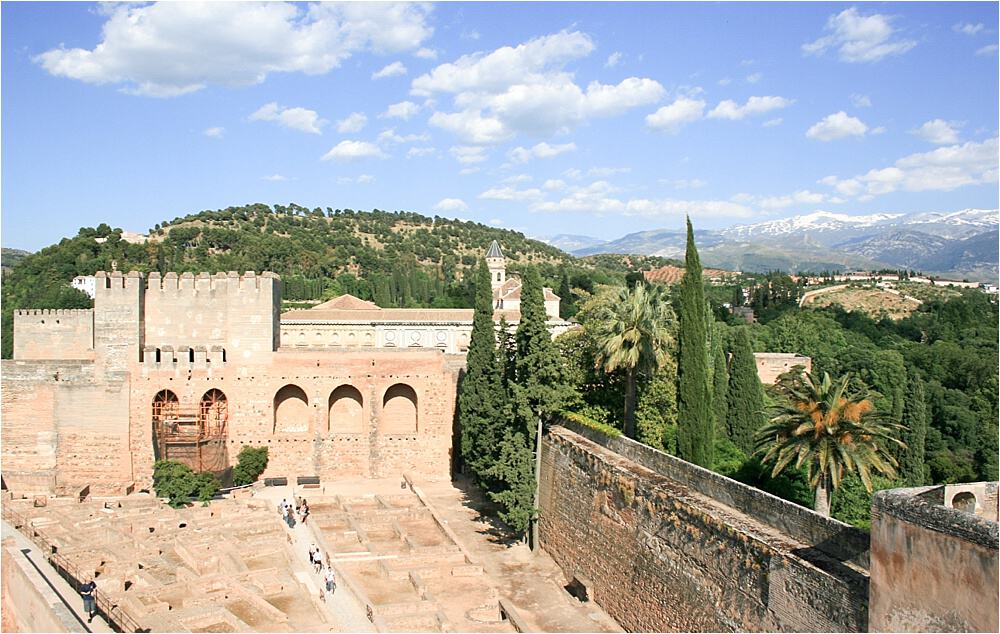
Granada
Typically, winter is perfect for city exploration, and there’s no doubt that Granada is one of the most explorable cities in Spain. With picturesque narrow streets, old buildings, and restaurants ready to serve you a hot lentil or garlic soup or the delicious Arroz con Leche, it can keep you busy for a whole day or more.
Visit the Alhambra, a Moorish palace and UNESCO World Heritage Site, and one of the most spectacular architectural complexes you’ll ever see. In summer, the burning overhead sun can make the visit a challenge, but in wintertime, it’s perfect.
From Granada, you can explore the Sierra Nevada Mountains to hit the slopes (or to spend a lazy afternoon at a sauna.)
Oviedo
The capital city of the Principality of Asturias in northern Spain is an important stopping point, both for those taking a road trip on the Spanish Atlantic coast and for those going to Santiago de Compostela – don’t forget to eat – Asturian cuisine is something special!
Oviedo is renowned for its excellent restaurants and old buildings. It is also a great starting point for the magnificent Picos de Europa National Park. But before heading out of the city, stop by the Church of Santa María del Naranco, which along with other 6 buildings in the town, has been declared a UNESCO World Heritage Site.
A Few Tips for Visiting Spain in Winter
- Check the weather – Spain may be famous for its sun but don’t be surprised to experience rain or even snow. Before booking your trip, check the weather forecast to see what to expect and pack accordingly.
- Make sure your accommodation provides heating –If you book an Airbnb apartment, you may find out upon arrival that there’s not a heat source inside. And while 15 degrees Celsius may be reasonable outside during the day, this doesn’t mean that the nights are just as friendly. Get more info on this subject before booking.
- Pack lots of layers – winter in Spain is like autumn in most European cities. So you may have to wear a jacket in the morning just to notice you no longer need it in the afternoon. Bring shirts, sweaters, and jackets to make sure you stay comfortable. And don’t forget closed shoes.
- Book in advance – In general, it’s easier to find accommodation in Spain in winter as you’ll beat the crowds. But around Christmas, New Year and Reyes Magos in particular, this may change. Book as early as you can to, as they say, avoid disappointment. Also, be aware that some seaside resorts may close down over winter, so bear this in mind as well.
More Travel Articles about Spain
- The Spain quiz for curious people
- 49 Interesting facts about Spain
- Spain in one week: an itinerary for your first time in Spain
- How to plan a road trip through Andalucia
- Galicia: how to travel through the salty north of Spain
- The best road trips in Spain
- How to spend a summer in Spain
- Bilbao or San Sebastian for your next trip?
- The ultimate Spain packing list


